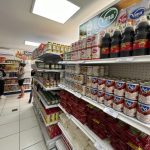▲ The semi-submersible ship is built with wood and fiberglass. It was transporting more than three tons of cocaine, valued at $37 million.Photo Luis Castillo
Gustavo Castillo García
Sent
La Jornada Newspaper
Monday, December 23, 2024, p. 4
Acapulco, Gro., Last October, the Secretariat of the Navy-Mexico Navy (Semar) dealt one of the biggest blows to international drug trafficking of the recent year, and it was confirmed that criminal organizations use semi-submersible vessels as wet nurses
that supply tons of cocaine in different parts of the ocean to various cartels that operate in national territory.
Naval personnel seized a 15-meter-long boat, built with wood and fiberglass, in which more than three tons of cocaine were transported, causing an estimated loss of more than $37 million for criminal groups, they said. Mexican authorities.
The ship had navigation systems, satellite communication, electrical generation, a propulsion system supported by three outboard motors, artisanal ventilation and was manned by three men of Ecuadorian nationality who traveled for days, lying down, enduring temperatures that exceeded 40 degrees. Celsius, with little water and food, according to what they told The Day three of the participants in the seizure of the drug and the artifact.
So far in this administration, acting as the Coast Guard, Semar has managed to seize more than 20 tons of cocaine that was transported in speedboats, mainly in states located in the Pacific Ocean area.
The seizure of the semisubmersible, which allegedly left Ecuador, is the greatest achievement in an operation, in which smaller boats with another five tons of the alkaloid were also seized.
Data from the International Center for Research and Analysis of Maritime Drug Trafficking, based in Colombia and made up of authorities from that country, as well as from Guatemala, Brazil, Mexico, Honduras, the Dominican Republic, Peru, Panama and Ecuador, refer to the possibility that a A vessel like the one insured in national waters was built clandestinely in some coastal area over the course of three months and its cost reaches figures close to a million dollars, an amount that is small compared to the resources that the traffickers would have obtained if they had arrived with the shipment to criminal groups.
The operation to intercept the ship began at noon on October 16, when the warning systems detected a possible target sailing in national waters off Guerrero.
The crew members of the Long Range Ocean Patrol – which carries out patrol work for a month or more, without having to refuel, as the ship has sufficient autonomy – deployed their devices, a helicopter and interceptor vessels, to corroborate what, through a The overflight seemed like an illicit intrusion into national waters.
The illegal vessel was difficult to detect with the naked eye, even for radar systems, since its construction, designed with engineering techniques to withstand the blows of the waves and reduce the noise generated by its movement, forced specialized maneuvers to be carried out to locate it correctly. exactly, indicated the three sailors who participated in the seizure.
The semi-submersible is covered with a kind of jute painted blue-green to blend in with the tide, and only the part of the outboard motors appeared above the waves, because the kind of cabin where the controls and the two small Windows are also hidden with their color.
But it was the three engines and a small tube that served as ventilation that allowed the 15-meter-long ship to be located, and equipped with two fuel tanks inside.
The cavity is enough space so that the cargo can be placed throughout the interior, and the crew can lie down and monitor their surroundings through two small windows placed in a kind of cabin no more than 40 centimeters high, they said. the naval commanders interviewed.
Currently the vessel is in the facilities of Naval Region number 12. The three crew members surrendered and were placed at the disposal of the Federal Public Ministry.











